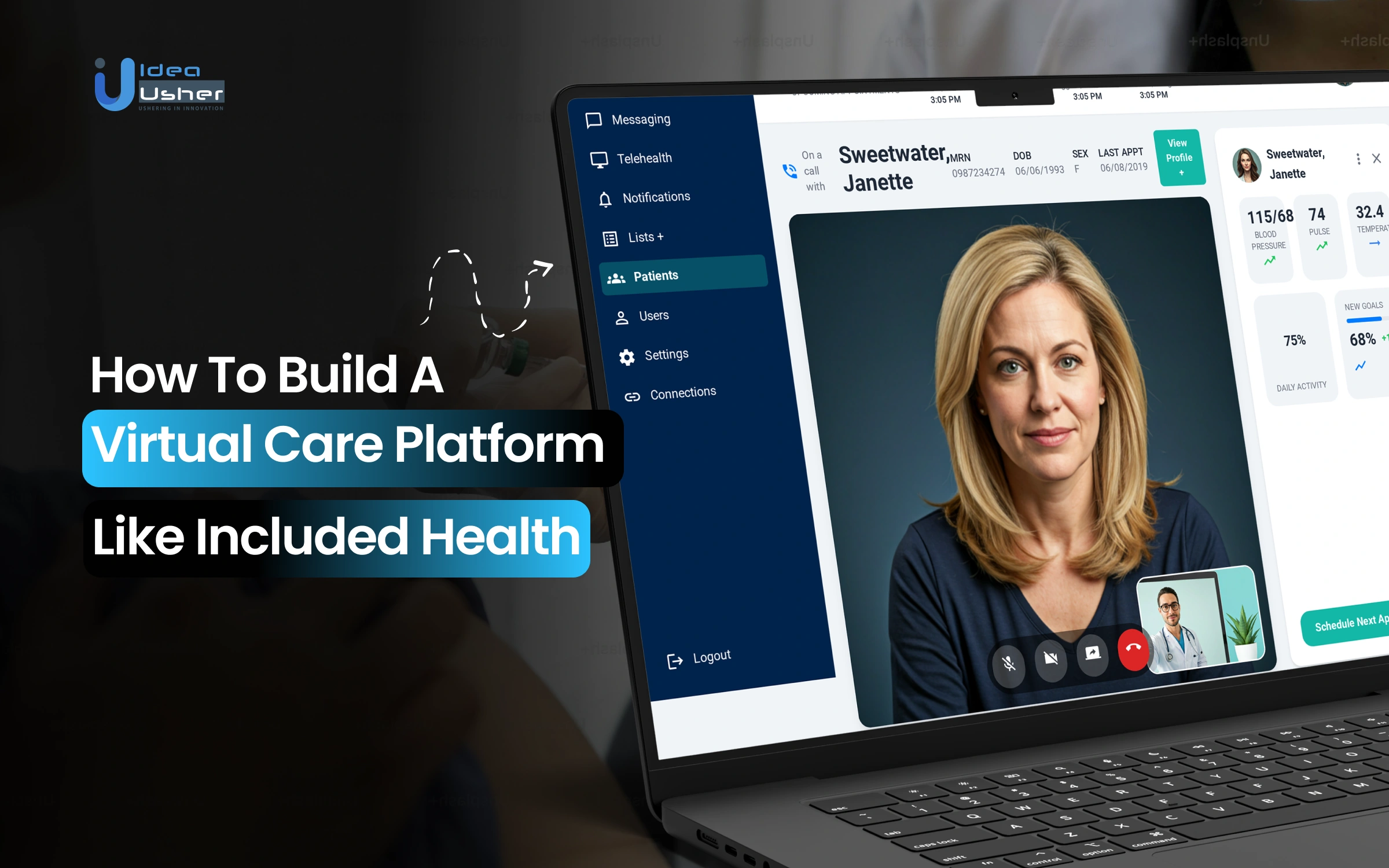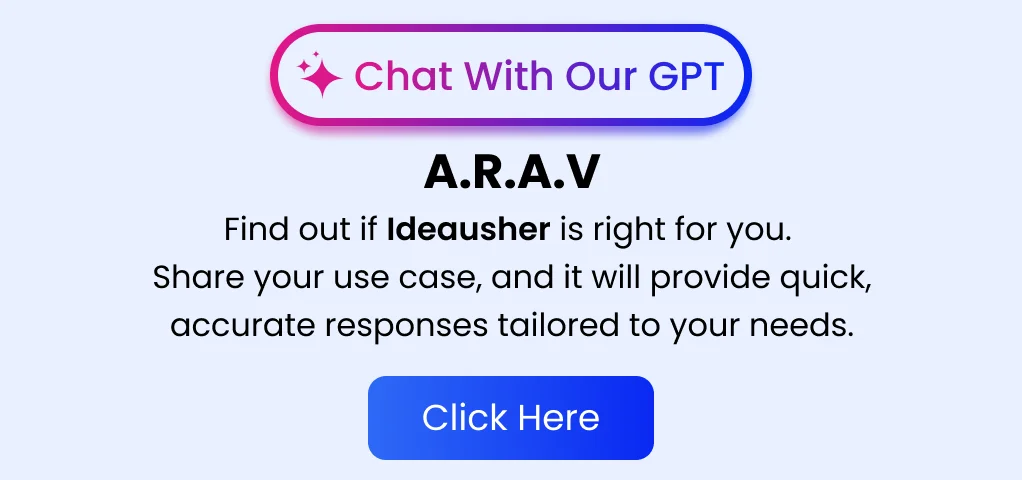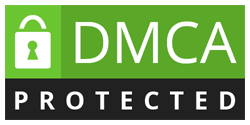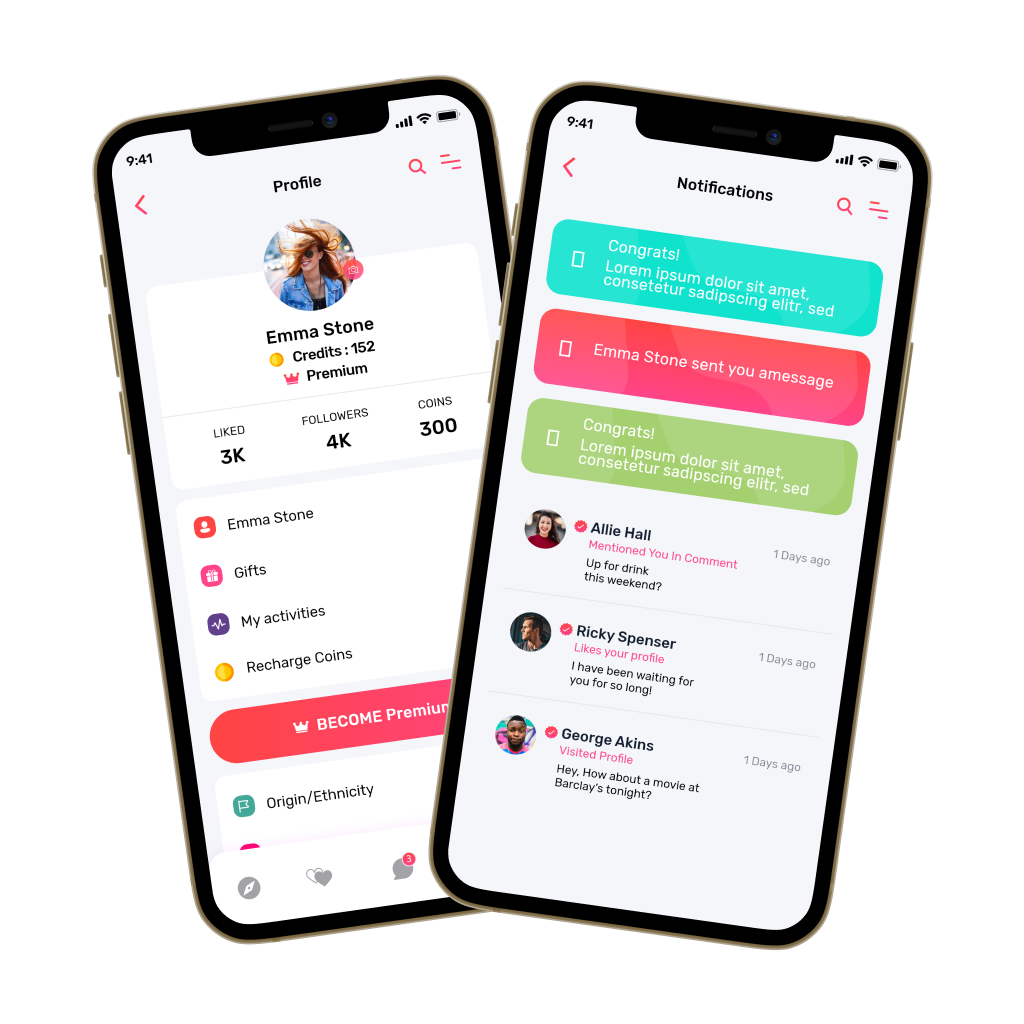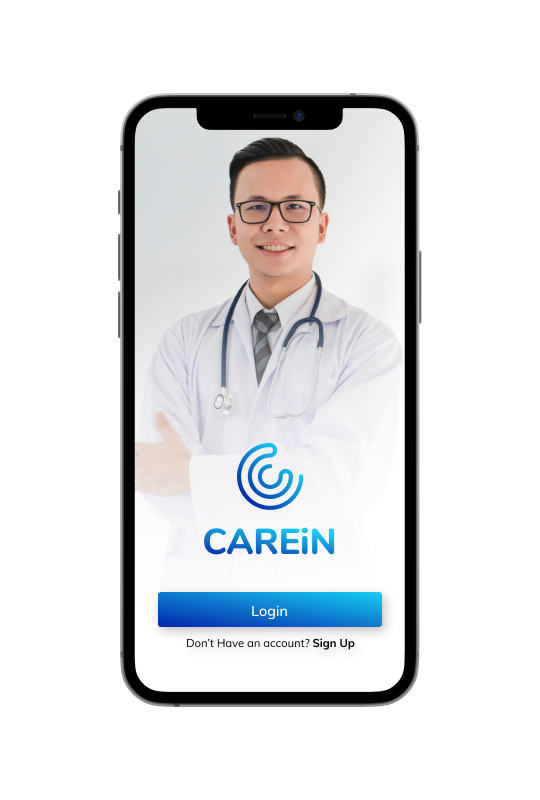Healthcare has always been deeply personal. Yet for many, it has also felt complicated. Long waits and endless forms can make even a simple visit feel exhausting. Finding the right doctor can turn into a guessing game that often leaves people feeling unsure and unheard. Many companies have started to realise that the old systems might not be enough anymore.
People now want healthcare to move at the same pace as their daily lives. They should be able to get help quickly, speak to a doctor easily, and manage everything without confusion. Virtual care platforms like Included Health are showing how this can genuinely happen. They bring together virtual consultations, ongoing care guidance, and smart digital tools that make the whole process smoother.
In this blog, we’ll break down how to build a virtual care platform like Included Health, the core features that make it truly effective, and the steps businesses should follow to create a solution that fits the evolving needs of modern patients. With our experience in developing digital healthcare solutions that have improved accessibility and patient engagement, Idea Usher can help transform your virtual care platform concept into a reliable, people-centred product ready for the market.
Key Market Takeaways for Virtual Care Platforms
According to PrecedenceResearch, the virtual care market is growing rapidly, with its value expected to jump from USD 20.08 billion in 2025 to USD 247.67 billion by 2034, reflecting a CAGR of 32.20%. This growth is driven by increasing demand for remote healthcare solutions and advancements in technology. People are embracing virtual care more than ever, as it offers convenience and greater access to services.

Source: PrecedenceResearch
Virtual care platforms are growing in popularity because they are affordable and easy to use. They offer vital services like urgent care, mental health support, and chronic disease management. These platforms are especially helpful in areas where in-person care is hard to access. They help make healthcare more inclusive and convenient for everyone.
Teladoc Health, Amwell, and Doctor On Demand are some of the major players in the virtual care space. Teladoc serves 80 million members globally and partners with hospitals and insurers for integrated care. Apart from that, Amwell works with over 100 health systems and 50 health plans, making telehealth more accessible and efficient.
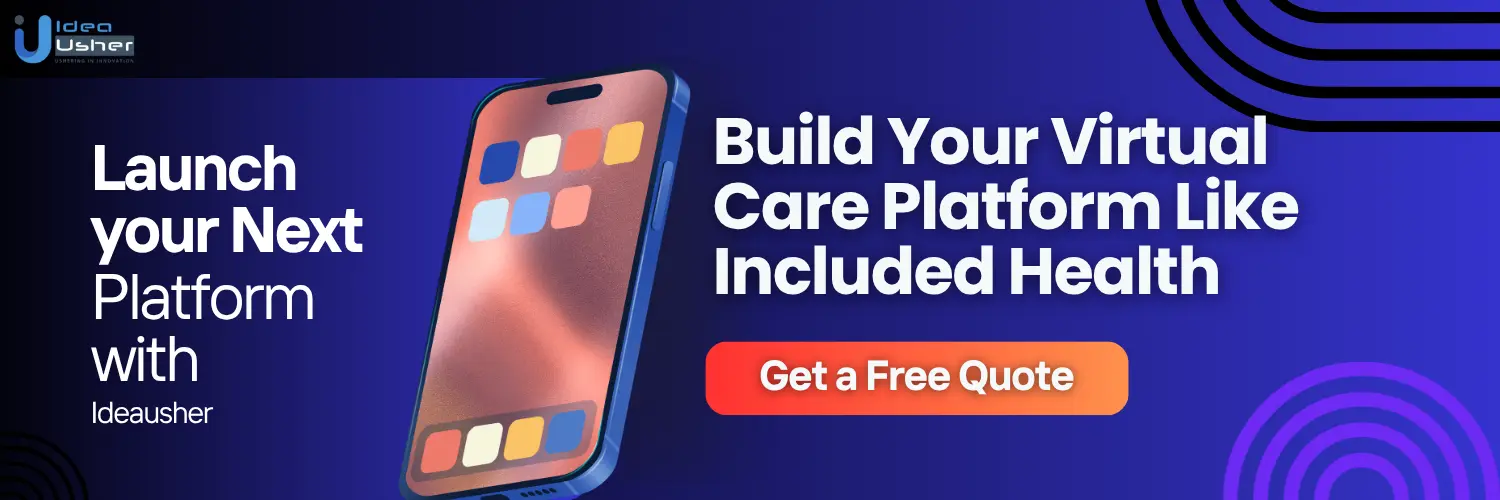
What Is the Included Health Platform?
Included Health is a comprehensive healthcare platform that integrates virtual and in-person care with expert navigation and advocacy services. It offers personalized support for everyday, urgent, and mental health needs, along with assistance in managing insurance and billing issues. The platform provides access to a network of over 4,000 specialists for second opinions and aims to deliver inclusive, culturally competent care through a user-friendly digital experience
What Features Make Included Health Stand Out?
Included Health goes beyond what most healthcare platforms offer. Here’s what makes them unique:
1. Integrated Expert Medical Opinions
Included Health helps the user get second opinions from top specialists for serious conditions. They gather medical records and connect the user with experts who can review them. The user doesn’t have to search for specialists on their own, making the process easier and faster.
2. Active Billing & Claims Advocacy
Included Health doesn’t just show the user their medical costs. They help resolve billing issues by reviewing bills and fighting against errors. If the user is hit with a surprise bill, Included Health works directly with providers to clear it up.
3. True Care Navigation & Coordination
Included Health offers real guidance throughout the user’s healthcare journey. Their team helps the user understand insurance benefits, find the right specialists, and schedule appointments. This care coordination saves time and ensures the user gets the help needed at every step.
4. Dedicated Focus on Inclusive Care
The platform is committed to inclusive care, particularly for underserved groups like LGBTQ+ individuals and people of color. Included Health connects the user with providers who understand and affirm their needs, ensuring respectful and culturally competent care.
5. “AI + EQ” Provider Matching
Included Health uses both AI and human understanding to match the user with the right provider. They consider factors like language and cultural background, ensuring a better fit between the user and their healthcare provider.
6. Employer & Payer-First Model
Included Health was designed with large employers and health plans in mind. It helps organizations improve employee engagement and reduce healthcare costs. It’s not just about individual care, but also about creating healthier, more efficient workforces.
How Does the Included Health Platform Work?
The Included Health platform makes healthcare simple by offering everything in one place. The user can easily access the right care, whether it’s a virtual consultation, a second opinion, or help with billing issues. With ongoing support and guidance, the user can feel confident knowing they have a trusted partner throughout their healthcare journey.

1. Single Entry Point for Every Need
The user starts their journey in one place. Whether the user has a physical symptom, mental health concern, confusing medical bill, or a complex diagnosis, they begin here. There’s no need to figure out which number to call or which portal to visit. Everything the user needs is in one spot.
2. Intelligent Triage & Personalized Guidance
Once the user logs in, they don’t have to search through endless options. The platform uses a smart mix of technology and expert support to guide them. The user simply describes their need, like “persistent cough,” “need therapy,” or “received a surprising bill.” The system then ensures they are directed to the right service quickly.
3. Access to the Right Care
Based on the user’s need, the platform provides easy access to the right care.
- For Immediate Clinical Needs: The user can schedule a virtual visit with a board-certified doctor for primary or urgent care. If the user needs mental health support, they can also connect with a therapist or psychiatrist. These visits are not one-time appointments. The user’s records are stored in the platform for continuous care.
- For Complex Conditions: If the user faces a serious diagnosis, like cancer or a major orthopedic issue, they’re connected to the Expert Medical Opinion service. The platform gathers their medical records and has them reviewed by a leading specialist. The specialist gives a second opinion on the user’s treatment plan.
- For Administrative Hurdles: If the user has questions about their benefits or encounters a billing issue, they are connected to a Care Navigator. This expert helps by reviewing claims, making calls, and resolving issues directly with providers.
4. Ongoing Support and Advocacy
The user’s relationship with Included Health doesn’t end after the consultation. The Care Navigator continues to follow up after each visit to ensure the user’s questions are answered. They help the user schedule appointments and manage any ongoing billing disputes. This continuous support helps the user stay on top of their healthcare needs.
What is the Business Model of Included Health Platform?
Included Health operates on a B2B2C or Business-to-Business-to-Consumer model, meaning they don’t sell directly to individuals but instead partner with organizations that are responsible for healthcare expenses. Their primary customers include:
- Large Employers
- Health Plans
- Public Sector Organizations
The value proposition to these clients is compelling: Included Health promises to significantly enhance the healthcare experience for employees and members, while simultaneously reducing overall healthcare costs. They do this by providing an integrated platform that combines several core services:
Key Offerings:
- Virtual Care Delivery: Includes primary care, urgent care, and behavioral health services, all accessible remotely.
- Expert Medical Navigation: Provides access to specialist second opinions and effective care coordination.
- Proactive Advocacy: Assists with benefits navigation and billing support, reducing confusion and improving the overall experience.
Revenue Model:
Included Health’s revenue strategy is diversified and structured around value creation, going beyond traditional per-visit fees. Their main revenue sources include:
Contractual Fees from Employers and Health Plans
Included Health charges clients recurring fees, often structured as Per Employee Per Month or Per Member Per Month. This setup ensures a steady stream of revenue. It helps create financial predictability, allowing them to plan and grow more effectively.
Value-Based and Performance-Based Contracts:
Included Health uses performance guarantees and shared savings models in their contracts. They share in the savings from reducing unnecessary medical costs like hospital admissions or surgeries. For example, their work with Walmart led to an 11% reduction in total healthcare costs, showing how effective this approach can be.
Care Navigation and Advocacy Fees
This includes charges for high-touch services like billing advocacy, specialist matching, and care coordination, which are essential in managing patient journeys.
Specialized Service Line Fees
Included Health grows its revenue by offering specialized virtual clinics like Cancer Care and in-home services. These services provide high value and often lead to cost savings for clients. As a result, they can charge premium fees for these offerings.
Financial Performance & Impact
Included Health is not just a well-funded startup, but a rapidly growing enterprise with solid proof of its business model’s effectiveness.
Revenue & Profitability: Estimated annual revenue of $344.8 million and consistent double-digit growth. The company reached profitability after 2021, signaling a shift towards sustainable, efficient growth, without needing to rely on venture capital.
Client Base & Impact: Included Health’s work with approximately 300 major employers and health plans shows strong market trust. Their impact is measurable, with key metrics including:
- 26% reduction in hospital readmissions
- 38% reduction in inpatient costs
These reductions lead to millions in savings for their clients, making their services highly cost-effective and valuable.
Funding Journey
Included Health raised $344 million in funding across multiple rounds from 2011 to 2020, with backing from prominent venture firms such as Venrock, Greylock, and The Carlyle Group. This funding facilitated their growth, product development, and strategic acquisitions, including the merger of Grand Rounds and Doctor on Demand.
Their last funding round occurred in 2020, and since then, they have focused on achieving profitability without additional capital infusions. Their estimated valuation has ranged from $750 million to over $1 billion, but the company’s current focus is on sustainable growth rather than valuation inflation.

How Does the AI Work in the Included Health Platform?
Included Health goes beyond the typical telehealth platform by embedding a smart AI system into its entire service. It’s not just a chatbot offering canned responses. Instead, it’s an intelligent framework that collects, processes, and uses data to give each member truly personalized care. Let’s break down how this AI works, from the data it uses to the outcomes it delivers.

1. The Data Fuel: A 360-Degree Member View
The AI’s true power lies in its ability to create a comprehensive and holistic profile of each member. By ingesting a broad spectrum of data, the platform generates a detailed, up-to-date view of the member’s health needs and preferences. Here’s the data it draws upon:
| Data Type | Description |
| Clinical Data | Symptoms, diagnoses, medications, and lab results. |
| Behavioral & Contextual Data | App interactions, user preferences (e.g., preferred doctor gender). |
| Social Determinants of Health (SDoH) | Cultural background, gender identity, sexual orientation to ensure inclusive care. |
| Financial Data | Insurance plans, billing data for cost transparency. |
| Provider Data | Clinician specialties, languages spoken, and cultural competencies. |
2. The AI Engine: Models for Understanding and Matching
Once the platform has gathered all this diverse data, it employs specialized machine learning models to create actionable insights. Here’s how it works:
NLP for Triage and Understanding
When a member describes an issue like a persistent cough and shortness of breath, the system processes the language to identify key symptoms, duration, and urgency. It then determines the best care option, whether it’s urgent care, a primary care follow-up, or further investigation into the causes. This ensures the member receives the right care exactly when it’s needed.
Recommendation and Matching Algorithms
The AI uses its “AI + EQ” model to consider clinical needs, insurance details, location, and personal preferences, including social factors. It then matches the member with the best providers from a detailed database. This ensures that the member gets care that is not only effective but also culturally relevant and supportive.
Predictive Analytics for Proactive Intervention
The platform analyzes past claims and clinical data to spot members at high risk for health issues like hospital readmission or expensive care paths. It then alerts the care team to reach out and provide support. This helps guide members to better care options before things get worse.
3. The User Output: Actionable Recommendations
The AI takes its insights and turns them into clear, actionable steps for both the member and the care team. Instead of just giving data, it provides specific recommendations. This helps make decisions easier and ensures everyone knows exactly what to do next.
For the Member/Patient
- Clear Next Step: Members get a straightforward recommendation like “We suggest a video visit with Dr. Smith for your respiratory concerns. Click here to confirm.”
- Personalized Provider Profiles: A shortlist of providers is generated, ranked by a “fit” score based on clinical needs, preferences, and social factors.
- Proactive Alerts: The system flags potential billing issues, alerting members with messages like, “We noticed a billing concern, and an advocate is reviewing it.”
For the Care Team (Navigators, Doctors, Advocates)
- Context-Rich Dashboards: Clinicians see a summary of the AI’s triage analysis before a visit, ensuring more informed and efficient care.
- Prioritized Task Lists: Care navigators receive a list of members prioritized by AI-based risks, ensuring high-risk members get timely support.
- Billing Anomaly Flags: Advocates are alerted to high-probability billing errors, streamlining issue resolution and reducing workload.
How to Build a Virtual Care Platform Like Included Health?
We have built several virtual care platforms like Included Health for our clients over the years. We focus on creating solutions that are both scalable and tailored to each client’s unique needs. Our approach ensures that the platform is functional, secure, and compliant with industry standards.

1. Define Platform Vision
The first thing we do is help our clients define the vision for their platform. We guide them in choosing whether to focus on primary care, navigation, behavioral health, or an integrated model. We also identify key stakeholders such as employers, payers, or consumers to make sure the platform is designed to meet the needs of the right audience.
2. Design Data Architecture
Once the vision is clear, we set up the data architecture. We integrate clinical and claims data using FHIR-compliant standards. A Member 360 dashboard is created to help care teams get a complete view of user data. This streamlined approach ensures that users get the best care possible while making it easier for teams to coordinate.
3. Develop AI and Recommendations
Next, we focus on developing AI-powered features. We build triage algorithms and provider-matching models using NLP and machine learning. We also make sure to integrate inclusivity metrics like language and cultural preferences to make the platform more accessible for a wide range of users.
4. Integrate Compliance and Security
Security is always a priority. We set up role-based access control and ensure all data is encrypted. Real-time monitoring systems are in place to keep everything secure. We also implement audit trails to ensure compliance with HIPAA and HITECH regulations, providing a safe environment for both users and healthcare providers.
5. Build Employer and Payer Modules
We integrate APIs to pull plan details, claims, and authorizations from third-party sources. This helps users access accurate information with ease. We also build tools for cost transparency and benefit management to give users a clearer understanding of their healthcare options.
6. Launch and Scale with Analytics
Finally, we deploy a cloud-based infrastructure that allows the platform to scale with growth. We use performance metrics like user engagement, cost savings, and clinical outcomes to measure the platform’s success. This data-driven approach helps our clients grow their platform and attract more enterprise clients.
Revenue Potential of a Virtual Care Platform Like Included Health
Virtual care platforms, such as Included Health, typically generate revenue through predictable, recurring contracts rather than one-time transactions. The core of their revenue model revolves around enterprise clients who pay a Per Member Per Month or Per Employee Per Month fee.
This model is popular in the virtual care industry, where companies like Grand Rounds and Accolade use similar approaches.
Pricing Benchmark
The PMPM fees for comprehensive navigation and virtual care platforms range from $3 to $12 per member, depending on the level of service.
- $3 – $6 PMPM: For basic virtual care and navigation.
- $7 – $12+ PMPM: For premium packages that include expert medical opinions, billing advocacy, and specialized care like oncology or musculoskeletal.
Client Base (Covered Lives): This refers to the total number of individuals (employees and their dependents) covered under the platform’s enterprise clients.
Revenue Estimation Across Growth Stages
Let’s break down the potential revenue a platform like Included Health could generate through three stages of growth:
Scenario A: Early-Stage Platform (Years 1-3)
At this early stage, the platform is focused on securing clients and proving the model.
Assumptions:
- Clients: 5-10 mid-to-large employers.
- Average Company Size: 5,000 covered lives per company.
- Total Member Base: 50,000 members.
- Average PMPM: $5.
Annual Revenue Calculation: 50,000 members × $5 PMPM × 12 months = $3,000,000
At this point, the platform is in growth mode. Revenue is reinvested into sales, marketing, and platform development to establish a solid client base.
Scenario B: Growth-Stage Platform (Scaled)
This scenario reflects a more mature stage, similar to Included Health’s current scale, where the platform has expanded significantly.
Assumptions (based on Included Health’s public data):
- Clients: Around 300 employers and health plans.
- Estimated Member Base: 5-7 million covered lives.
- Average PMPM: $6 to $8 (reflecting a blend of basic and premium services).
Annual Revenue Calculation:
- Lower Estimate: 5 million members × $6 PMPM × 12 months = $360,000,000
- Higher Estimate: 7 million members × $8 PMPM × 12 months = $672,000,000
Analysis: These numbers align with Included Health’s reported revenue of approximately $344 million, but the exact revenue will depend on how many clients are on premium packages. A higher proportion of premium clients (e.g., those with expert medical opinions) can push the revenue closer to the higher estimate.
Scenario C: Market Leader (Mature Platform)
At this stage, the platform has cemented itself as a leader in the virtual care space.
Assumptions:
- Clients: Over 500 enterprise clients, including large health plans.
- Total Member Base: 15+ million covered lives.
- Average PMPM: $7 (reflecting a highly optimized product mix).
Annual Revenue Calculation: 15 million members × $7 PMPM × 12 months = $1.26 billion
With such scale, the platform would be integral to the healthcare ecosystem, generating over a billion dollars in annual revenue.
Additional Revenue Opportunities
While the core revenue stream comes from the PMPM model, sophisticated platforms like Included Health can boost their earnings through several additional avenues:
Value-Based Care/ Shared Savings Contracts
These agreements let the platform share in the savings they help generate for clients. Typically, the platform earns 15-30% of the healthcare costs saved.
For example, if the platform saves a client $10 million in healthcare costs, it could earn $1.5 to $3 million from that single client.
Fee-for-Service Add-Ons
For specific services outside the standard PMPM offering (such as complex medical opinions or specialized care management for rare diseases), platforms can charge additional fees. These add-ons can generate thousands of dollars per case.

Essential Tools for Virtual Care Platform Like Included Health
Building a virtual care platform like Included Health isn’t just about writing code. It’s about creating a secure, interoperable system that works smoothly for everyone involved. The right tech stack is crucial because it forms the foundation of trust, efficiency, and growth. Let’s take a look at what you need to build that foundation.

1. Interoperability & Data Management
At the heart of any virtual care platform is ensuring seamless, secure data flow. Interoperability is critical, and the right technologies make this possible.
FHIR/HL7 APIs
The healthcare industry relies on these standards for data exchange. FHIR (Fast Healthcare Interoperability Resources) is vital as it structures and shares patient information such as records, lab results, and medications. Without FHIR, you’re building a siloed system rather than a connected healthcare ecosystem.
AWS HealthLake / Google Cloud Healthcare API
These cloud services are designed for healthcare-specific data storage. They allow for secure, compliant management of Protected Health Information (PHI). These platforms help structure data in the FHIR format, enabling seamless integration and regulatory compliance from the outset.
2. The Patient Experience
The patient interface is where real interactions happen. It’s essential to create a smooth and intuitive experience to make communication with the care team easy. Twilio and Vonage offer simple, HIPAA-compliant tools for voice, video, and messaging, letting you focus on patient care instead of the tech.
3. The Intelligence Layer
A virtual care platform needs AI to guide patients and improve their experience. NLP tools like spaCy and Hugging Face help analyze patient messages to understand their needs. This way, the platform can direct them to the right care, whether urgent or for mental health.
4. Analytics & Reporting
For a platform to prove its worth to payers and employers, it must provide clear data insights. Snowflake stores this data, while Power BI and Tableau turn it into easy-to-read dashboards. These visualizations help show key metrics like utilization, savings, and patient outcomes, which are essential for demonstrating value.
5. Security & Compliance
Security is critical in healthcare. If your platform isn’t secure, it can undermine trust and ruin everything.
- Okta for Identity Management: Okta makes sure that only authorized users, like patients and providers, can access the platform. It uses multi-factor authentication to add an extra layer of security. This helps keep sensitive data safe while ensuring that only the right people can get in.
- Vanta / Drata: Maintaining HIPAA and SOC 2 compliance is complex. Vanta and Drata automate the compliance monitoring process, providing real-time updates and alerts to help manage ongoing audits. These tools simplify compliance and mitigate risks in the long term.
- AWS KMS (Key Management Service): AWS KMS enables the encryption of sensitive data both at rest and during transit. You control the encryption keys, ensuring that even if unauthorized access occurs, the data remains secure and unreadable.
Conclusion
Building a platform like Included Health represents a major step in digital healthcare transformation. Companies that combine care navigation, delivery, and advocacy in one platform will drive the next wave of innovation in healthcare. By focusing on interoperability and AI-driven personalization, they can offer more efficient and tailored care solutions. Idea Usher helps businesses achieve this by ensuring scalability and compliance in their virtual care solutions. This integrated approach can significantly improve healthcare accessibility and outcomes for users.
Looking to Develop a Virtual Care Platform Like Included Health?
At Idea Usher, we specialize in creating virtual care platforms that meet the unique needs of your users. We combine deep healthcare knowledge with technical expertise to ensure your platform is secure and scalable. Our goal is to help you build a solution that makes healthcare more accessible and efficient for everyone.
Why Partner with Idea Usher?
- 500,000+ Hours of Mastery: Your project is in the hands of a veteran team with over half a million hours of coding experience, including former MAANG/FAANG developers who specialize in building scalable, secure, and innovative solutions from day one.
- Beyond Code – A Strategic Partnership: We offer more than just developers. Our deep understanding of the healthcare tech landscape helps ensure your platform is built with HIPAA compliance, FHIR interoperability, and value-based care reporting from the start, reducing risk and ensuring success.
- Proven Excellence in Action: Don’t just take our word for it. Explore our portfolio to see the sophisticated, high-performance platforms we’ve delivered for clients in the healthcare sector.
Let’s build more than a feature. Let’s build the future of healthcare together!
Work with Ex-MAANG developers to build next-gen apps schedule your consultation now
FAQs
A1: To develop a virtual care platform, start by defining the key features you need such as video consultations, care navigation, and billing support. Then, focus on integrating secure systems for data management and compliance with healthcare regulations. Finally, build a user-friendly interface that can scale and adapt to the needs of your users.
A2: Building a virtual care platform can take several months, depending on the complexity of the integrations, regulatory compliance, and the range of features needed. The process involves careful planning and development to ensure everything works smoothly.
A3: The cost to develop a virtual care platform can vary significantly depending on the features, data integrations, and scalability required. It’s an investment that grows with the platform’s needs and the level of customization involved.
A4: Virtual care platforms can adopt various revenue models, including subscription-based contracts with employers, per-visit billing, white-label licensing, and providing data-driven analytics solutions. The choice of model depends on the platform’s goals and target audience.
